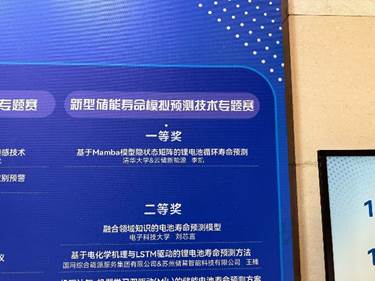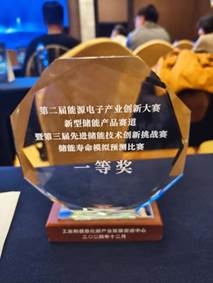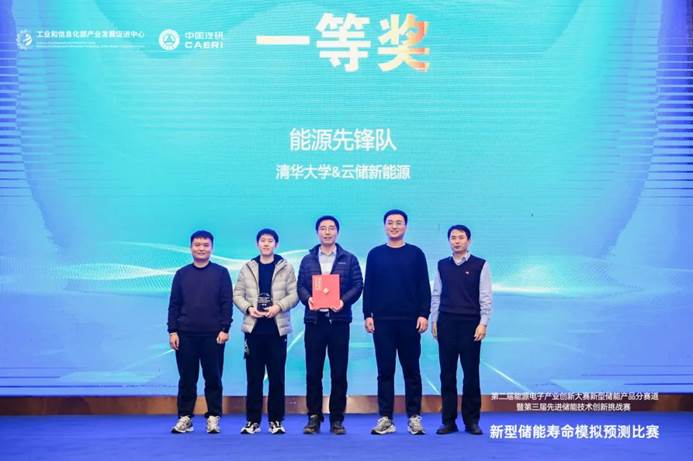On December 26-27, 2024, the 2nd Energy Electronics Industry Innovation Competition in the new energy storage product track and the 3rd Advanced Energy Storage Technology Innovation Challenge were held in Liyang, where the winners were announced. The Information and Energy Laboratory of the Department of Electrical Engineering and Applied Electronics (EEA), Tsinghua University, in collaboration with Yunchu New Energy Technology Co., Ltd., received the only First Prize in the New Energy Storage Lifetime Simulation and Prediction Technology Competition for their project "Lithium Battery Cycle Lifetime Prediction Based on Mamba Model Hidden State Matrix."


The performance degradation of lithium-ion batteries is influenced by various complex nonlinear factors, and accurately predicting their lifetime remains a challenge in the industry. Researcher Ci Song, the project leader of the national key R&D program "Hundred-Megawatt-Level Dynamic Reconfigurable Battery Energy Storage Technology" (No. 2023YFB2407900), focuses on the unique charge-discharge characteristics of dynamic reconfigurable battery energy storage systems. The project aims to reveal the intrinsic mechanisms of battery material aging and the lifetime degradation mechanisms to improve the lifetime of hundred-megawatt-hour dynamic reconfigurable battery energy storage systems. The participating project established a multi-source, multi-scale, high-dimensional state-space model based on long time-series battery behavior. It explicitly connects the battery aging phenomenon with internal electrochemical processes, creatively integrating recurrent neural networks (RNNs) and convolutional neural networks (CNNs). The project designed a structured state-space sequence model to capture and analyze the hidden state information of batteries. For the first time, this method revealed the linear dependency between the hidden state matrix norm and the State of Health (SOH) over battery cycle counts. It is applicable to various types of electrochemical batteries and significantly improves the accuracy of lifetime predictions, reducing the average prediction error by more than two-thirds compared to the method proposed by MIT in the 2019 Nature Energy journal.
This achievement opens up a new path for battery cycle lifetime prediction, providing predictive methods for optimizing the full lifecycle of dynamic reconfigurable battery storage systems, which will be an important tool for extending the lifespan of large-scale battery energy storage plants, with broad application prospects. The participating teams in the New Energy Storage Lifetime Simulation and Prediction Technology Competition came from 22 teams, including institutions such as the University of Electronic Science and Technology, Xiamen University, State Grid Integrated Energy Service Group Co., Ltd., Tongji University, Jilin University, North China University of Technology, and BYD Energy Storage, among others. Participants applied their proposed algorithms to the battery dataset provided by the host, with prediction accuracy being a key evaluation criterion.

This year's Energy Electronics Industry Innovation Competition's new energy storage product track and the third Advanced Energy Storage Technology Innovation Challenge focused on "Innovation-Driven, Advanced Energy Storage" and categorized the competition into three classes based on technology maturity: innovation and creativity, innovative products, and special competition tracks. The special competition tracks included lifetime simulation prediction, safety and fire protection, and intelligent sensing technologies.

















 News & Events
News & Events